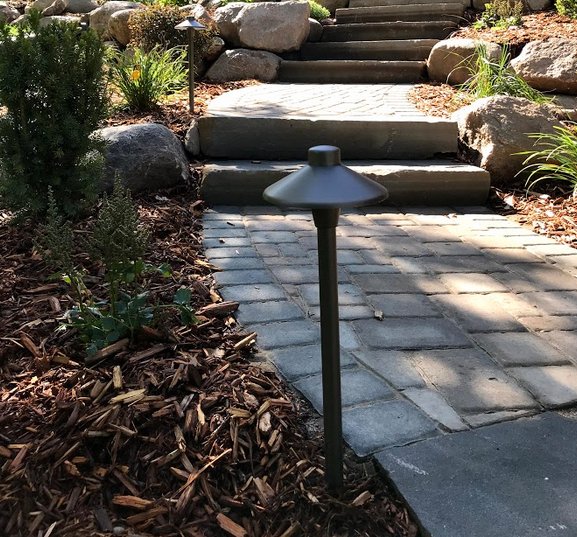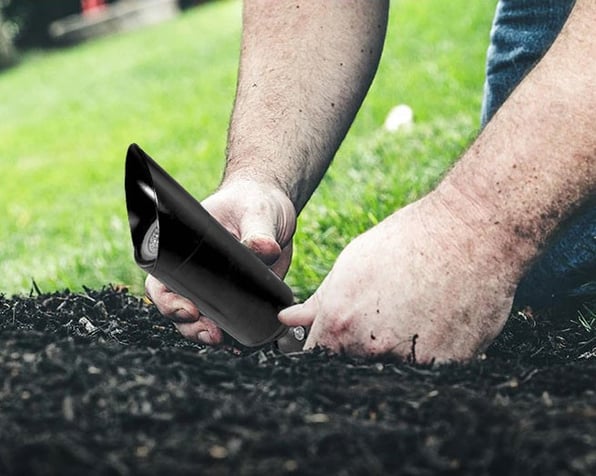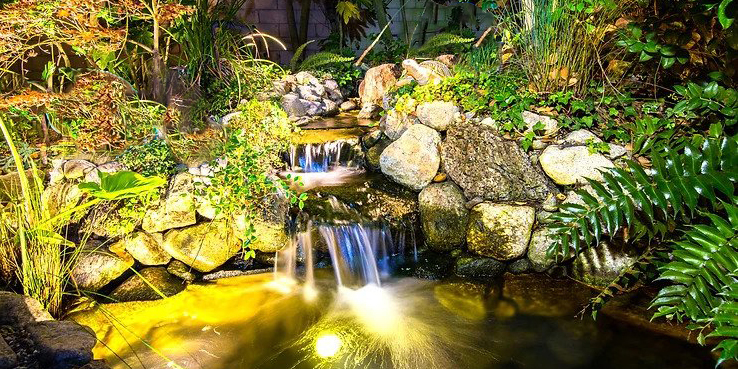
12 min read
Glowing Water Features: DIY Lighting Ideas for Ponds and Waterfalls
Posted by The Illuminator
If you're seeking to enhance the beauty of your outdoor space with mesmerizing water features, proper lighting can make a world of difference. In this article, we will explore unique and achievable DIY lighting ideas that will transform your ponds and waterfalls into captivating focal points.
Well-designed lighting can bring your water features to life, providing a magical ambiance during the evening hours. By implementing these DIY lighting ideas, you can create an enchanting outdoor environment that sets the perfect mood for relaxation and entertainment.
Our aim is to provide you with expert guidance and step-by-step instructions for adding stunning lighting effects to your ponds and waterfalls. Whether you have a small backyard pond or a grand waterfall, we have ideas suitable for various scales and budgets. These DIY lighting projects will not only enhance the aesthetic appeal of your outdoor space but also ensure safety and visibility.
Throughout this article, we will share insider tips, creative techniques, and real-life examples to inspire and empower you to embark on your own DIY lighting journey. Let's delve into the world of DIY lighting for ponds and waterfalls and discover how you can create a truly captivating outdoor ambiance.
Importance of Lighting for Ponds and Waterfalls
Proper lighting plays a crucial role in enhancing the beauty and functionality of your ponds and waterfalls. Let's delve into the importance of lighting for these water features and explore how it can elevate your outdoor space.
Enhancing Aesthetic Appeal:
Effective lighting can transform a simple pond or waterfall into a breathtaking focal point. By strategically illuminating the water and surrounding areas, you can create a visually stunning display that highlights the unique features and textures of your water elements. Whether it's showcasing the gentle flow of a waterfall or illuminating the ripples in a pond, the right lighting enhances the overall aesthetic appeal of your outdoor space.
Creating Ambiance:
Lighting sets the mood and atmosphere of your outdoor area. By carefully selecting the color, intensity, and positioning of lights, you can create a specific ambiance that aligns with your desired outdoor experience. Soft, warm lighting can evoke a cozy and intimate atmosphere, while vibrant and colorful lights can bring a festive and lively vibe. With the right lighting, you can transform your ponds and waterfalls into enchanting spaces that invite relaxation and enjoyment.
Safety and Visibility:
Proper lighting for your water features is not just about aesthetics—it also plays a crucial role in ensuring safety and visibility. Well-lit ponds and waterfalls reduce the risk of accidents by providing clear visibility, especially during nighttime. Whether you have pathways near your water features or guests frequently gather in your outdoor space, adequate lighting helps prevent trips and falls, ensuring a secure environment for everyone.
Extending Enjoyment:
With the right lighting, you can extend the enjoyment of your ponds and waterfalls into the evening hours. Imagine sitting by a softly lit pond, listening to the soothing sounds of a waterfall under the starry night sky. Lighting allows you to appreciate the beauty of your water features long after the sun sets, providing a delightful experience for you, your family, and your guests.
By understanding the importance of lighting for ponds and waterfalls, you can appreciate the transformative power it holds. In the next section, we will explore different types of lighting options suitable for your DIY projects, enabling you to create stunning effects for your water features.

Types of Lighting for Ponds and Waterfalls
When it comes to illuminating your ponds and waterfalls, there are various lighting options available to suit your specific needs and preferences. Let's explore different types of lighting that you can consider for your DIY lighting projects.
LED Lights:
LED (Light-Emitting Diode) lights are a popular choice for illuminating water features. They are energy-efficient, durable, and versatile. LED lights come in various colors and can be easily installed both underwater and above the water surface. Whether you want to create a soft, warm glow or vibrant, changing colors, LED lights offer a wide range of options to bring your water features to life.
Submersible Lights:
Submersible lights are designed to be placed underwater, allowing you to create stunning underwater lighting effects. These lights are typically waterproof and come in different sizes and shapes. Submersible lights can be strategically positioned to highlight specific areas within your ponds or to illuminate waterfalls from beneath, creating a captivating and ethereal ambiance.
.jpg?width=1080&height=1080&name=Brass%20Pond%20(UWL601).jpg)
Spotlights and Uplights:
Spotlights and uplights are ideal for highlighting specific features of your water elements. These lights are typically installed above the water surface or around the perimeter of your ponds and waterfalls. Spotlights can create dramatic effects by focusing intense beams of light on specific areas, while uplights can softly illuminate the surrounding vegetation, rocks, or water cascades, adding depth and dimension to your water features.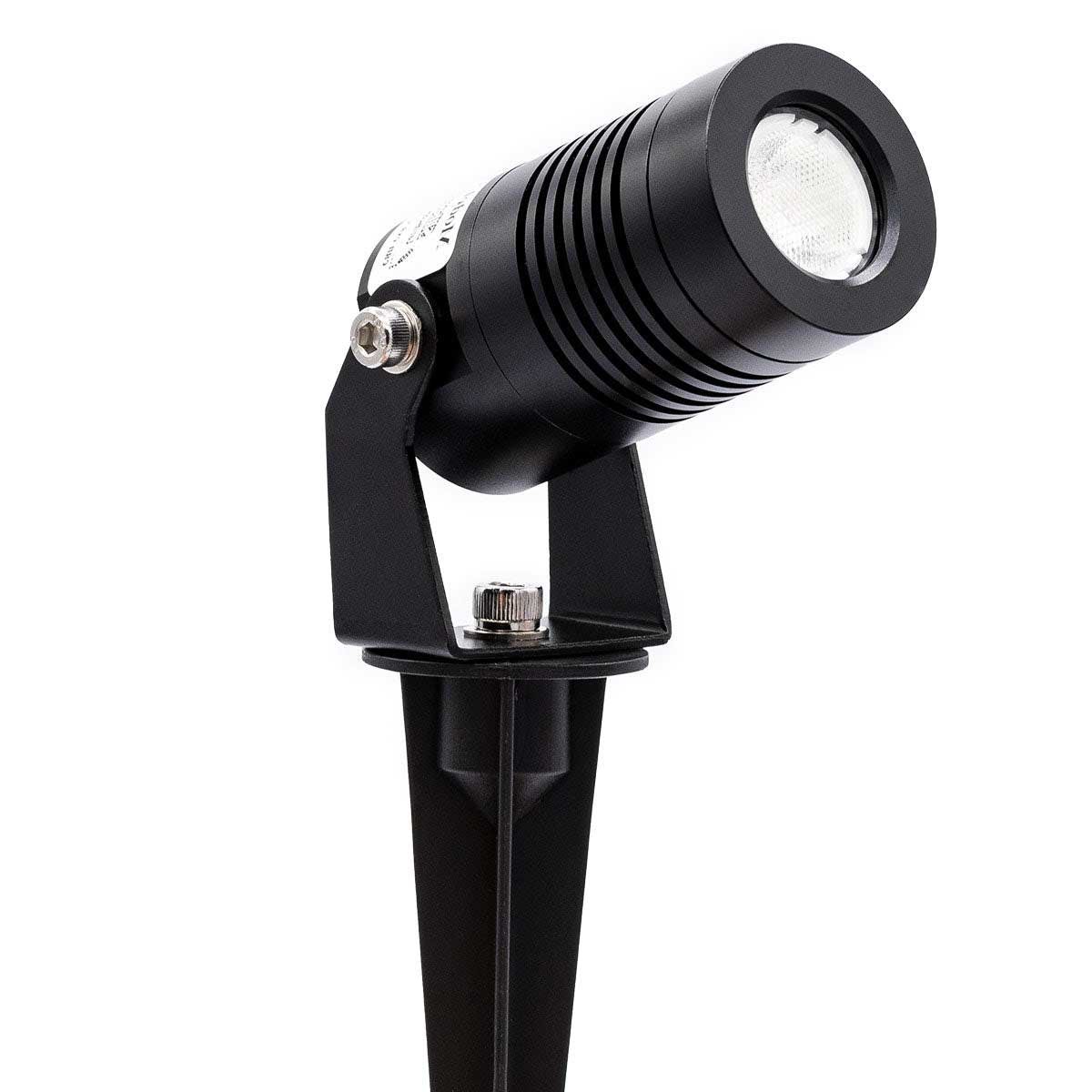
Preparing Your Water Feature for Lighting
Before you embark on your DIY lighting project for your ponds and waterfalls, it's essential to properly prepare your water features. This section will guide you through the necessary steps to ensure a smooth installation process and optimal lighting effects.
Plan the Layout:
Begin by visualizing how you want your water features to be illuminated. Consider the focal points, areas you want to highlight, and the overall lighting scheme you desire. Sketch a layout plan, marking the positions where you intend to place the lights. This planning phase will help you determine the quantity and type of lights you'll need for your project.
Assess Electrical Requirements:
If you opt for LED lights or other wired lighting options, assess the electrical requirements for your lighting setup. Ensure that there is a nearby power source or plan for the necessary wiring connections. If you're not confident in handling electrical work, consult a professional electrician to assist you with the wiring and connections.
Waterproofing:
As water and electricity are a potentially dangerous combination, it's crucial to ensure proper waterproofing for your lighting fixtures. Select lights specifically designed for underwater or outdoor use, as they are built to withstand moisture. Additionally, check the waterproofing ratings and instructions provided by the manufacturers. Properly seal and waterproof all connections to prevent any electrical hazards.
Safety Measures:
Prioritize safety throughout your DIY project. Make sure to turn off the power supply before working with any electrical components. If you're working near water, use appropriate safety equipment such as insulated gloves and boots. If necessary, install ground fault circuit interrupters (GFCIs) to protect against electrical shocks. Safety should always be your top priority when handling electrical installations.
Test Lighting Effects:
Before permanently securing the lights in their designated positions, it's advisable to conduct a test run. Temporarily position the lights as per your layout plan and observe the lighting effects during the evening hours. Make any necessary adjustments to ensure that the lights are placed in the most optimal positions for achieving your desired visual effects.
By adequately preparing your water features for lighting installation, you'll ensure a successful and safe DIY project. In the next section, we will delve into a variety of DIY lighting ideas specifically tailored for ponds and waterfalls, inspiring you to create captivating lighting effects that will transform your outdoor space.
DIY Lighting Ideas for Ponds and Waterfalls
Now that you have prepared your water features for lighting installation, it's time to explore various DIY lighting ideas that will transform your ponds and waterfalls into mesmerizing focal points. Get ready to unleash your creativity and bring your vision to life.
Waterfall Illumination:
Illuminate your waterfalls to create a captivating visual spectacle. Install lights behind or alongside the waterfalls to emphasize the cascading water and enhance its beauty. Experiment with different lighting angles and intensities to achieve the desired effect. Soft, warm lighting can create a soothing atmosphere, while brighter lighting can add drama and highlight the dynamic movement of the water.
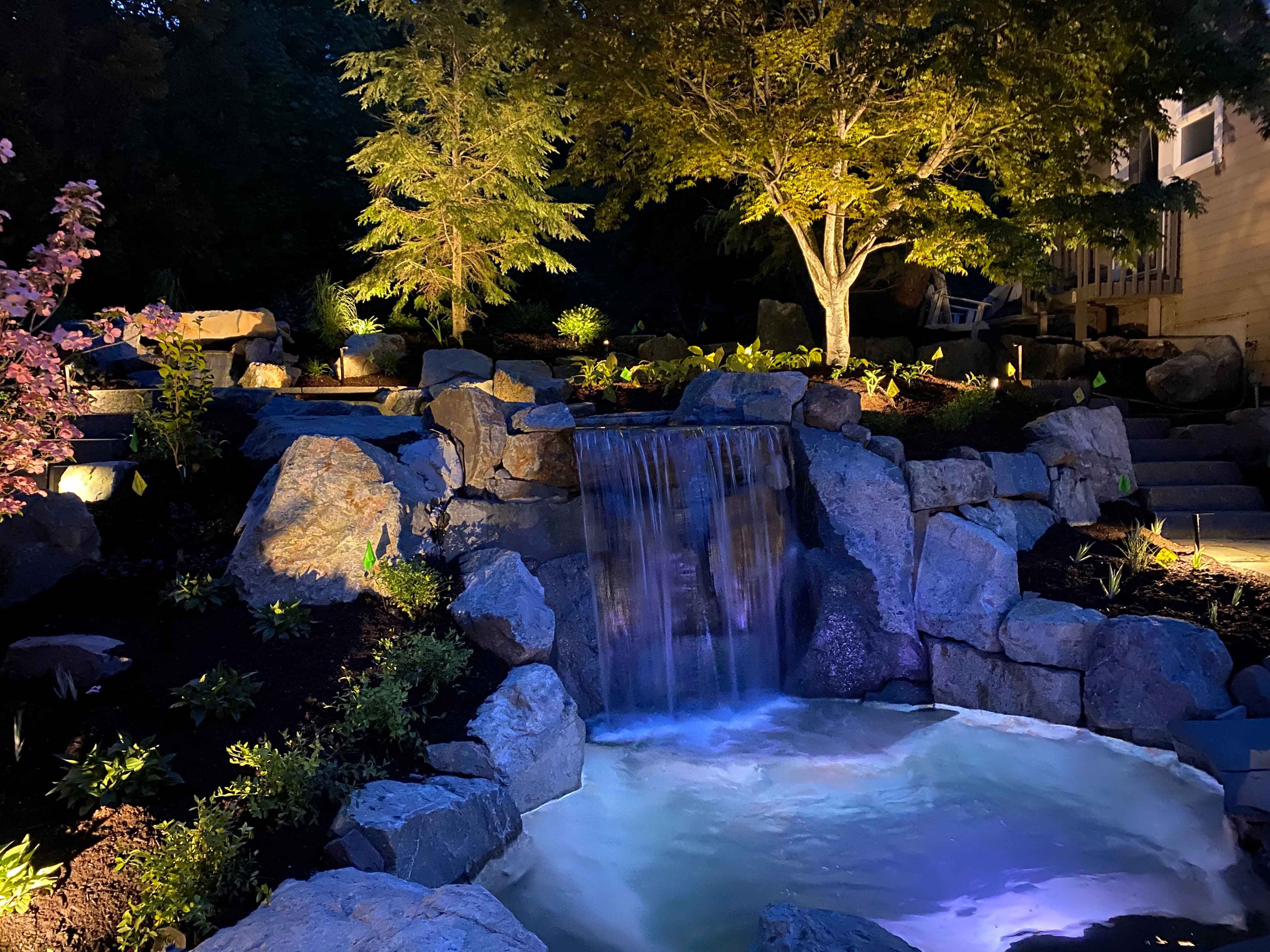
Pathway and Landscape Lighting:
Extend the enchantment of your water features to the surrounding landscape by incorporating pathway and landscape lighting. Install lights along the pathways leading to your ponds and waterfalls to ensure safe passage. Use landscape lighting to accentuate nearby plants, trees, or architectural features, creating a harmonious and cohesive outdoor environment.
Moonlight Effect:
Create a romantic and serene ambiance by simulating the natural glow of moonlight on your water features. Install soft, diffused lights placed strategically to mimic the moon's gentle radiance. This effect can evoke a sense of tranquility and add an ethereal touch to your ponds and waterfalls.
Remember to experiment, play with different lighting combinations, and adapt the ideas to suit your personal style and the unique characteristics of your water features. With these DIY lighting ideas, your ponds and waterfalls will become captivating focal points that elevate the overall beauty of your outdoor space.
In the next section, we will discuss important safety considerations and provide maintenance tips to ensure the longevity and optimal performance of your lighting fixtures.
Safety and Maintenance Tips for DIY Landscape Lighting
When it comes to DIY landscape lighting, ensuring safety and proper maintenance is essential for the longevity and functionality of your lighting fixtures. In this section, we will discuss important safety considerations and provide maintenance tips to help you enjoy your outdoor lighting system for years to come.
Electrical Safety:
When working with electrical components, safety should always be a top priority. If you're not experienced with electrical work, consider hiring a professional electrician to handle the wiring and connections. Ensure that all electrical components, such as transformers and junction boxes, are installed according to local electrical codes. Use waterproof connectors and junction boxes to protect against moisture and ensure safe electrical connections.
Outdoor-Rated Fixtures:
Select lighting fixtures that are specifically designed for outdoor use. Outdoor-rated fixtures are built to withstand the elements and are sealed properly to prevent water damage. Ensure that the fixtures have the appropriate IP (Ingress Protection) rating, indicating their resistance to water and dust. Using indoor-rated fixtures outdoors can pose a safety risk and lead to premature failure.
Regular Inspections:
Regularly inspect your lighting system to identify any signs of damage or wear. Check for loose connections, damaged cables, or corroded components. Address any issues promptly to prevent further damage or safety hazards. Inspect the fixtures for water intrusion and replace any damaged or malfunctioning fixtures immediately.
Proper Cleaning:
Keep your lighting fixtures clean to maintain their optimal performance. Remove any dirt, debris, or vegetation that may accumulate on the fixtures. Use a soft cloth or sponge with mild soap and water to clean the surfaces. Avoid using harsh chemicals or abrasive materials that can damage the fixtures. Regular cleaning helps to maintain the aesthetics and functionality of your lighting system.
Seasonal Adjustments:
As the seasons change, make necessary adjustments to your lighting system. During the winter months, ensure that fixtures are clear of snow and ice to prevent damage. In autumn, clear away fallen leaves and debris that may block or affect the lighting effects. Adjust the positioning and angles of the lights as needed to account for changes in vegetation growth or landscaping features.
Routine Maintenance:
Schedule routine maintenance to keep your lighting system in optimal condition. This may include replacing bulbs, checking voltage levels, and inspecting transformers and wiring connections. Follow the manufacturer's guidelines for specific maintenance tasks and intervals. Routine maintenance helps to prolong the lifespan of your lighting fixtures and ensures consistent performance.
By prioritizing safety and following proper maintenance practices, you can enjoy the beauty and functionality of your DIY landscape lighting for years to come. Now that you have learned about safety considerations and maintenance tips, you are well-equipped to create a stunning outdoor lighting display that enhances your landscape and brings your vision to life.
Additional Resources and Inspiration
Congratulations on reaching the final section of our blog post on DIY lighting ideas for ponds and waterfalls! As you continue to explore and expand your knowledge in the realm of landscape lighting, we'd like to provide you with some additional resources and sources of inspiration to fuel your creativity.
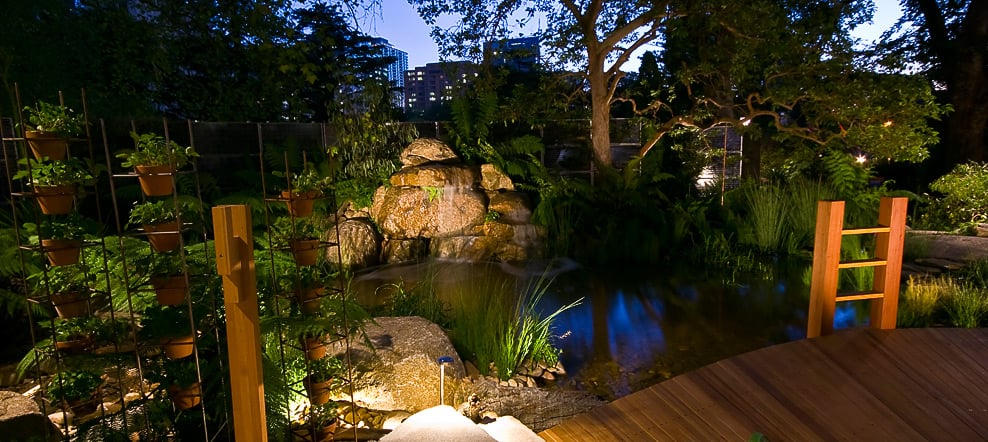
Online Tutorials and Guides:
The internet is a treasure trove of valuable resources when it comes to DIY projects. Look for online tutorials and guides that offer step-by-step instructions, tips, and techniques for various lighting installations. Websites, blogs, and video platforms such as YouTube can be excellent sources of inspiration and practical guidance.
Visit Lighting Showrooms and Garden Centers:
Pay a visit to lighting showrooms and garden centers in your area. These places often display a variety of lighting fixtures and setups, providing you with real-life examples and inspiration for your own projects. Engage with the staff and ask for recommendations or advice tailored to your specific needs.
Home and Garden Magazines:
Subscribe to home and garden magazines that feature articles on outdoor lighting and landscaping. These publications often showcase beautiful projects, offer design tips, and provide product recommendations. Browse through the pages to gather ideas and stay updated on the latest trends in landscape lighting.
Remember, the possibilities for DIY landscape lighting are vast, and your creativity is the limit. As you embark on your lighting journey, take inspiration from various sources, adapt ideas to suit your space and personal style, and enjoy the process of creating a truly captivating outdoor ambiance.
We hope this blog post has provided you with valuable insights, guidance, and inspiration for your DIY lighting projects. Remember to prioritize safety, invest in quality lighting fixtures, and stay open to experimenting with different lighting techniques. Now, go forth and illuminate your ponds and waterfalls, transforming your outdoor space into a magical oasis of light and beauty!
If you have any further questions or need assistance along the way, feel free to reach out. Happy DIY lighting!
FAQs (Frequently Asked Questions)
Q1: Can I install landscape lighting around my ponds and waterfalls on my own?
A1: Yes, you can install landscape lighting around your ponds and waterfalls as a DIY project. However, it is important to follow safety guidelines and consider hiring a professional electrician if you're not confident in handling electrical work.
Q2: How do I choose the right type of lighting for my water features?
A2: Consider factors such as the desired lighting effects, the location of your water features, and your personal preferences. LED lights, submersible lights, solar-powered lights, spotlights, and rope lights are popular options to consider. Choose lighting that complements the aesthetics of your outdoor space.
Q3: Are there any special considerations for underwater lighting?
A3: Yes, when installing underwater lighting, make sure to use lights specifically designed for underwater use. Ensure proper waterproofing and follow the manufacturer's instructions for safe installation. Regularly inspect and maintain the underwater lights to prevent any water damage or electrical issues.
Q4: How do I ensure the safety of my landscape lighting system?
A4: Prioritize electrical safety by using outdoor-rated fixtures, and waterproof connectors, and following proper wiring and installation techniques. Conduct regular inspections to identify any signs of damage or wear. Keep the fixtures clean and clear of debris. Follow maintenance guidelines and address any issues promptly.
Q5: Can I customize the lighting effects for my water features?
A5: Yes, you can customize the lighting effects by experimenting with different colors, angles, and intensities. Utilize color-changing lights, spotlights, and uplights to create various effects. Consider using lighting control systems that allow you to adjust and program different lighting patterns.
Q6: Are there energy-efficient options for landscape lighting?
A6: Yes, LED lights are a popular choice for energy-efficient landscape lighting. They consume less energy, have a longer lifespan, and are available in various colors and intensities. Solar-powered lights are another eco-friendly option as they harness energy from the sun and eliminate the need for wiring or electricity connections.
Q7: How do I plan the layout for my landscape lighting project?
A7: Begin by visualizing how you want your water features to be illuminated. Consider the focal points, areas to highlight, and overall lighting scheme. Sketch a layout plan and mark the positions for lights. Plan for electrical requirements and ensure a nearby power source or plan for necessary wiring connections.
Q8: What should I do if a lighting fixture malfunctions or stops working?
A8: If a lighting fixture malfunctions or stops working, first check the connections and ensure the power supply. Replace any burnt-out bulbs with new ones of the same type. If the issue persists, consult the manufacturer's troubleshooting guide or seek assistance from a professional electrician.
Q9: Can I integrate my landscape lighting with other outdoor features?
A9: Yes, you can integrate your landscape lighting with other outdoor features. Consider incorporating lighting into pathways, garden beds, architectural elements, or outdoor seating areas to create a cohesive and visually appealing outdoor environment.
Q10: Where can I find more inspiration and resources for DIY landscape lighting?
A10: Online tutorials, lighting design software, lighting showrooms, garden centers, online communities, and home and garden magazines are great sources of inspiration and resources. These platforms offer a wealth of ideas, guidance, and expert advice to help you explore and expand your DIY landscape lighting projects.

